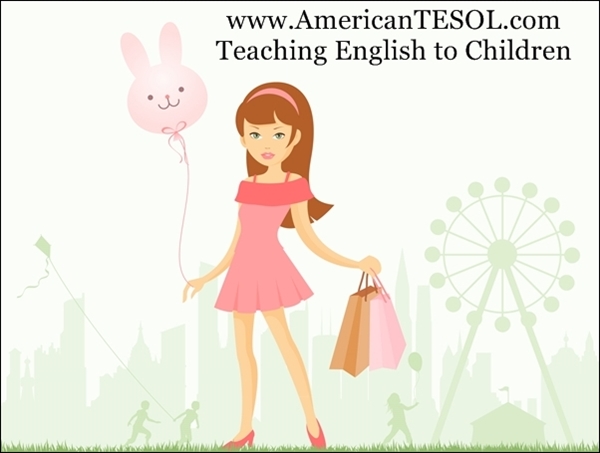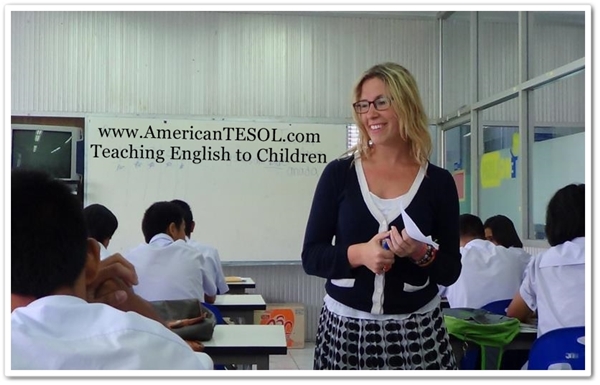American TESOL for Children online programs focuses on ESL teaching methods for age groups two through seventeen, and the different developmental stages of children. Instructors focus on a variety of TESOL methodologies, classroom disciplinary methods, and which combinations of methods work best in TESOL classrooms. This course also includes an optional online TESOL internship where participants will be able to practice their teaching skills in a virtual environment.
Course Description:
American TESOL for Children online certification program provides a base knowledge in teaching English as a second language, with focus on methods and approaches to TESOL.
Program Objectives:
– Examine the core knowledge of TESOL
– Create ESL lesson plans
– Assess and compare TESOL methods of teaching
– Facilitate successful communication in the TESOL classroom
Learning Outcomes:
– Correctly identifying methods and approaches to TESOL.
– Improvement of student achievement.
– Improvement of teacher confidence.
– Introduction to teaching ESL online.
Competencies:
Participants will be able to:
– Provide a classroom environment for learning English.
– Design and implement ESL lesson plans that reflect best teaching practices.
– Demonstrate high expectations of all students learning.
– Monitor and assess student progress
Modules and Assignments:
Module One – Using Icebreaker Activities, Teaching Preferences, & Acronyms
Reading Assignment: Pages 1-3 TESOL for Children E-Book, 40 Icebreakers for Small Groups E-Book, Icebreakers E-Book
Which age group would you like to teach most and why?
Describe the characteristics of your three most influential teachers throughout childhood.
What do the acronyms TESOL, SLA, L1, and L2 stand for?
Design your own Icebreaker activity
Short writing assignment: What is an Icebreaker?
Acronyms Quiz
Module Two – What is Language
Reading Assignment: What is Language PDF, What is English PDF, Properties of Spoken Language, 8 Parts of Speech article
What is telegraphic speech?
What are the 8 parts of speech?
Telegraphic Speech Quiz
Properties of Spoken Language Quiz
Module Three – Effective Teaching, Teacher Roles, & Gross Motor Skills
Reading Assignment: Page 5 TESOL for Children E-Book, What is Effective Teaching PDF, Teacher Roles PDF, Effective Teaching Strategies: Six Keys to Classroom Excellence article
Name five different types of gross motor skills not mentioned in the text. Do the same for fine motor skills.
Describe your favorite teacher
Motor Skills Quiz
Module Four – Educational Methodology, Speech Production, & Input Sources
Reading Assignment: Pages 7-10 TESOL for Children E-Book, Teaching Methodologies PDF, Teaching Special Groups PDF, Wikipedia Speech Production Page
Which type of music and movies would you like to introduce to children of other cultures? Why?
Teaching Special Groups writing assignment
Speech Production Quiz
Module Five – Teaching Listening & Pedagogy
Reading Assignment: Pages 8-17 TESOL for Children E-Book, Teaching Listening PDF, How To Teach Listening PDF, Listening Comprehension Difficulties PDF
Name and describe one exercise that can be utilized for learning English involving math, science, and social studies separately.
Module Six – Teaching Speaking
Reading Assignment: Pages 18-22 TESOL for Children E-Book, Review Pages 6-7, Discussion Debate PDF, Teaching Speaking PDF, Pronunciation PDF, Wikipedia Erikson’s Stages Page
Name and define five learning stages and ten vocabulary words that you think are appropriate for each of the five learning stages.
Stages of Language Development Quiz
Module Seven – Lesson Planning & Comprehension
Reading Assignment: Review Page 7 TESOL for Children E-Book, Lesson Planning PDF, Planning First Lessons PDF, Wikipedia Lesson Plan Page, Creating the Best ESL Lesson Plans article
What is comprehensible input? What is comprehensible output? How are they the same? How are they different?
Why are lesson plans important?
Comprehensible Input and Comprehensible Output Quiz
Module Eight – Drilling
Reading Assignment: Review Page 8 TESOL for Children E-Book
Are the children of bilingual households at a disadvantage? Why or why not?
Module Nine – Intelligence Types
Reading Assignment: Intelligence Types PDF
What intelligence type are you? Describe your intelligence type and tell how it can contribute to you being an effective teacher.
Intelligence Types Quiz
Module Ten – Presenting Vocabulary: Lexical Approach
Reading Assignment: Review Pages 9-10 TESOL for Children E-Book, Activities for Intelligence Types
Describe a classroom activity for each of the intelligence types
Module Eleven – Knowing Your Students
Reading Assignment: Practical Activities to Stimulate Multiple Intelligences PDF, Wikipedia Theory of Multiple Intelligences Page
Take the Multiple-Intelligence Self-Test
What did you learn about your intelligence levels?
Module Twelve – Teaching Reading & Stages of Discipline
Reading Assignment: Review Pages 11-12 TESOL for Children E-Book, Stages of Discipline PDF, 11 Techniques for Better Classroom Discipline PDF, Managing Students article, Steps for Teaching Reading to ESL Students article, Teaching Our Children to Read, Write, and Spell PDF
How do discipline methods change and evolve for each age group?
What do you think is the most important rule for discipline not mentioned in the above text?
Module Thirteen – Teaching Writing, Aids in Learning
Reading Assignment: Teaching Writing PDF, How to Teach Writing to ESL Students PDF, Creative Writing Exercises for ESL Students 1 PDF, Creative Writing Exercises for ESL Students 2 PDF, Children’s Writing in ESL article
What learning materials/teaching aids will you utilize in the TESOL classroom?
Children’s Writing in ESL Quiz
Module Fourteen – Classroom Management
Video Assignment: Motivating Students to Learn
Reading Assignment: Review Pages 13-23 TESOL for Children E-Book, Safe Learning Environments PDF, How to Motivate ESL Students article, Motivation: What Teachers Need to Know PDF
Name and describe three ways that you can create a safe and shameless learning environment for each of the learning methods.
Motivation: What Teachers Need to Know Quiz
Module Fifteen – Approaches and Strategies to TESOL
Video Assignment: Observing Standards-in-Action: ESL Classroom Lesson
Reading Assignment: Approaches to TESOL PDF, Learning Strategies for TESOL PDF
Describe five approaches to TESOL
TESOL Methods and Approaches Quiz
Module Sixteen – Behavior Management & Computer Assisted Language Learning
Reading Assignment: Pages 24-39 TESOL for Children E-Book
Create a lesson plan using a 45-minute template
Optional – Online Teaching Internship
Extra Credit – Create a Lesson for CALL
Module Seventeen – Creating Lesson Plans for Young Learners
Video Assignment: How to Teach
Reading Assignment: Review Pages 24-32 TESOL for Children E-Book, Lesson Planning Guide E-Book
Create the first of 5 lesson plans for children (Lesson Plan 1)
Module Eighteen – Student Assessment
Create a second lesson plan for children (Lesson Plan 2)
Module Nineteen – Creating a Syllabus
Create a third lesson plan for children (Lesson Plan 3)
Module Twenty – Learning Strategies for TESOL
Create a fourth lesson plan for children (Lesson Plan 4)
Module Twenty-one – Approach & Method
Reading Assignment: Review Approach & Method article
Create a fifth lesson plan for children (Lesson Plan 5)
Module Twenty-two – Understanding Student Assessment Final Essay
Video Assignment: Student Assessment
What are the different concepts you will explore when doing student assessments?
Final Essay should be 300-400 words on a topic of your choice from the TESOL for Children E-Book
AMERICAN TESOL INSTITUTE © 2004 – 2013


